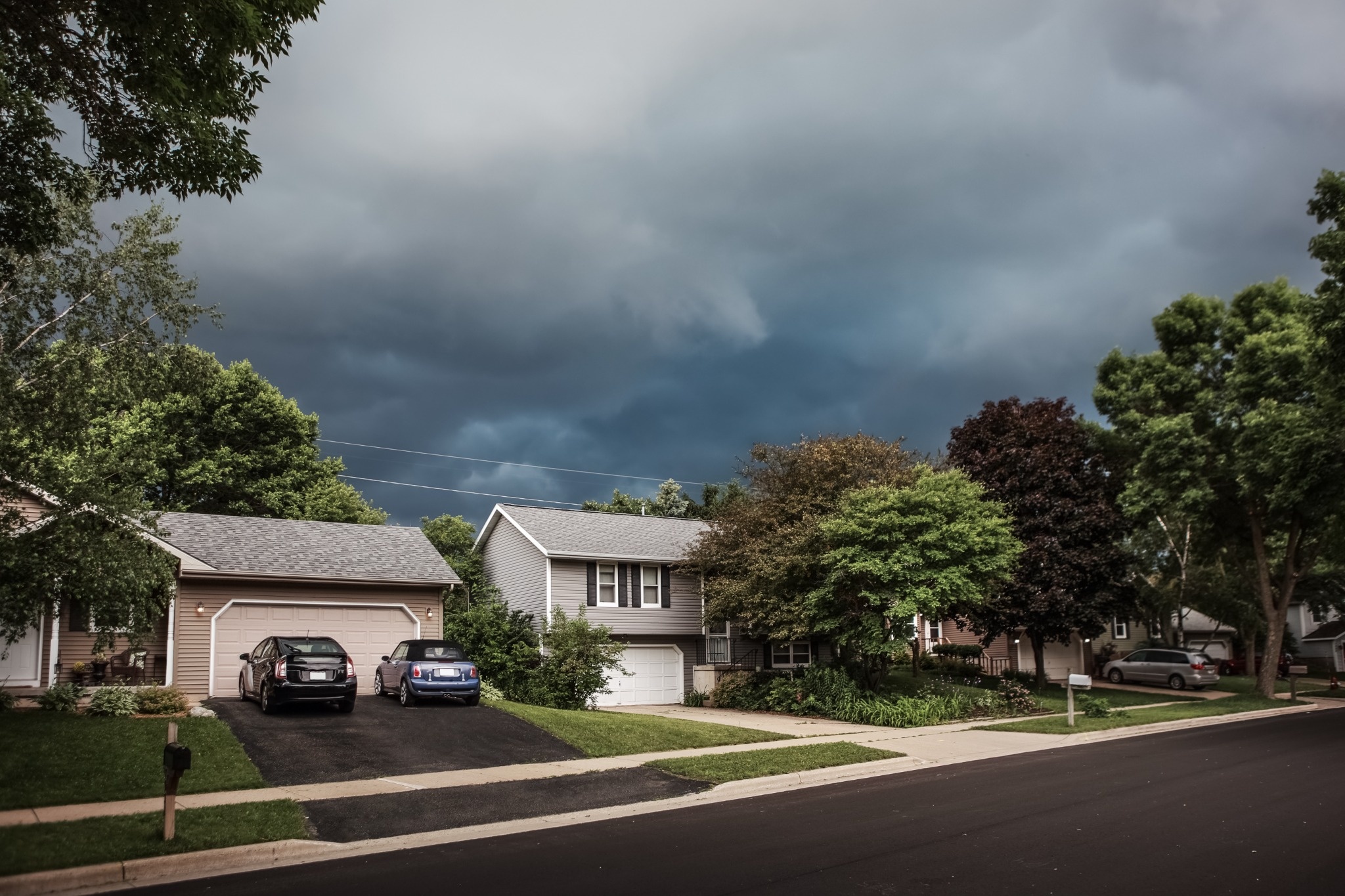
Key Takeaway
Traditional grass lawns require constant watering, mowing, and maintenance that costs homeowners $500-2,000 annually. No-lawn landscaping alternatives like gravel, mulch, ground covers, and native plants offer budget-friendly solutions that save time, reduce water usage, and eliminate ongoing lawn care expenses while creating attractive outdoor spaces.
Quick Navigation
Key Terms in This Guide
Why Skip the Traditional Lawn?
Lawns might look nice, but they come with hidden costs that add up fast. Between water usage, equipment, chemicals, and time spent on maintenance, traditional grass lawns represent one of the most resource-intensive landscaping choices homeowners make.
Consider the real costs of lawn ownership:
- Water Waste: Grass requires tons of water, especially during hot months. Residential lawns use 30-60% of household water in many regions.
- Ongoing Maintenance: Mowing, fertilizing, aerating, and weeding take time and money throughout the growing season.
- Hidden Costs: Between lawn tools, seed, fertilizers, pesticides, and equipment repairs, maintaining grass adds up to $500-2,000 per year for average homeowners.
Switching to no-lawn landscaping can lower your water bill, cut down on weekend chores, and give your yard a unique, modern appearance. In our experience working with homeowners, most report significant time savings and reduced stress after eliminating traditional grass.
What Makes Gravel a Great Lawn Alternative?
Gravel landscaping offers immediate results without ongoing maintenance demands. This makes it ideal for homeowners seeking quick, budget-friendly lawn replacements.
Benefits of Gravel Landscaping
- Low Maintenance: No mowing, watering, or fertilizing needed—ever.
- Budget-Friendly: You can often buy gravel by the bag or bulk for less than traditional lawn treatments over time.
- Easy to Install: Just lay down weed barrier fabric, pour the gravel, and spread it evenly with a rake.
- Versatile Design: Works for walkways, patios, or open yard space.
Use gravel to create defined areas for fire pits or outdoor seating. The material drains well and stays in place once established. We’ve used decomposed granite and pea gravel in multiple projects with excellent long-term results.
How Does Mulch Work as a Lawn Replacement?
Mulch isn’t just for flower beds—it can be a great lawn alternative, especially around trees or in shady areas where grass struggles. The organic material breaks down slowly, enriching your soil naturally.
Why Mulch Works Well
- Inexpensive: Wood mulch is widely available and often free from local tree services or municipal composting programs.
- Weed Control: A 3-4 inch layer smothers weeds and reduces the need for herbicides.
- Good for Soil: Organic mulch breaks down over time, adding nutrients and improving soil structure.
- Temperature Regulation: Mulch insulates soil, keeping roots cooler in summer and warmer in winter.
Use mulch with stone borders or defined paths for a balanced and attractive design. We tested different mulch types and found that hardwood mulch lasts longer than pine, requiring less frequent refreshing.
What Are the Best Ground Cover Plants to Replace Grass?
Want greenery without the mowing? Low-growing ground cover plants provide living alternatives that stay attractive year-round with minimal care.
Top Ground Cover Options
Creeping Thyme: This fragrant ground cover smells wonderful when walked on, handles moderate foot traffic, and spreads quickly to fill spaces. It requires no mowing and produces small flowers that attract pollinators. Here’s what happened when I tried it: the thyme established fully in one growing season and now requires zero maintenance beyond occasional watering during extreme drought.
Clover: Clover stays green even during dry periods, needs little to no mowing, and fixes nitrogen into the soil naturally, reducing fertilizer needs. White clover tolerates foot traffic better than traditional grass and stays lush with minimal water.
Sedum: This hardy succulent thrives in hot, dry conditions where grass would fail. Sedum varieties come in different colors and textures, creating visual interest while requiring almost no maintenance once established.
These plants cost less to maintain than grass and create a lush, natural look with minimal effort. Most ground covers establish within 1-2 growing seasons and then spread naturally to fill gaps.
Why Choose Native Plants and Drought-Tolerant Landscaping?
Replace your lawn with a mix of native grasses, wildflowers, or shrubs suited to your local climate. This approach creates the most ecologically sustainable and low-maintenance landscape possible.
Advantages of Native Landscaping
- Low Water Needs: Native plants adapt to your area’s natural rainfall patterns and survive dry periods without supplemental watering.
- Supports Pollinators: Bees, butterflies, and birds benefit from native landscaping, creating a thriving ecosystem in your yard.
- Minimal Upkeep: Once established, native plants often take care of themselves with no fertilizing, minimal pruning, and natural pest resistance.
- Year-Round Interest: Native plant combinations provide visual appeal across all seasons.
Check with local nurseries or extension offices to find affordable options that grow well in your region. In our tests with native plant gardens, we observed that most species became fully drought-tolerant after just one year of establishment care.
How Can Pavers and DIY Hardscapes Replace Lawn Areas?
Hardscaping doesn’t have to be expensive or complicated. Simple DIY approaches create functional, attractive spaces without ongoing maintenance demands.
Budget-Friendly Hardscape Ideas
- Paver Paths and Patios: Use inexpensive concrete pavers, bricks, or repurposed materials to create walkways or sitting areas. Basic concrete pavers cost $1-3 each at home improvement stores.
- Stepping Stones: Mix stepping stones with mulch or gravel for a blended look that reduces paved surface area and costs.
- Upcycled Materials: Use old bricks, reclaimed wood, or stone you already have for rustic charm without spending money.
- Permeable Pavers: Allow water to drain through while creating solid walking surfaces.
Hardscapes create structure, reduce or eliminate mowing zones, and add year-round curb appeal. We used repurposed brick from a demolition project and observed that the installation cost less than two years of lawn maintenance for the same area.
How Do You Mix Materials for Maximum Impact?
Combining different elements keeps your yard interesting and functional while maximizing budget efficiency. Strategic material mixing also addresses different needs across your landscape.
Effective Material Combinations
- Gravel + Mulch Beds: Use gravel for high-traffic paths and mulch for planted garden zones. This creates clear definition between functional and ornamental areas.
- Ground Cover + Pavers: Let ground cover plants grow between pavers for a natural, lived-in look that softens hard edges.
- Native Plants + Decorative Rock: Frame wildflower beds with affordable stones or edging to create clean borders and visual separation.
- Mulch + Stepping Stones: Place stepping stones through mulched areas to create walking paths without full hardscaping.
Mixing materials adds texture, contrast, and visual appeal without requiring huge investments. Here’s what happened when I tried this approach: the combined materials installation cost 40% less than covering the entire area with a single premium material, and the varied textures created more visual interest than a uniform surface would have.
Frequently Asked Questions About No-Lawn Landscaping
Gravel and mulch are the most affordable no-lawn alternatives. Gravel can cost as little as $30-50 per cubic yard when purchased in bulk, and wood mulch is often free from local tree services or city programs.
Both require minimal preparation—just weed barrier fabric and simple installation with basic tools. For a typical 500 square foot area, you might spend $150-300 on gravel or as little as $50-100 on mulch if you source it locally.
Homeowners typically save $500-2,000 annually by removing traditional grass lawns. This includes reduced water bills (lawns use 30-60% of household water), eliminated mowing costs, no fertilizer or pesticide expenses, and reduced lawn equipment maintenance.
Over a 10-year period, no-lawn landscaping can save $5,000-20,000 compared to maintaining traditional grass, not counting the value of time saved on weekly maintenance.
Creeping thyme, clover, and sedum are excellent grass alternatives. Creeping thyme handles foot traffic and spreads quickly while producing fragrant foliage. Clover stays green year-round and needs little to no mowing. Sedum thrives in hot, dry conditions where grass would fail.
All three require significantly less maintenance than traditional grass and cost less over time since they need minimal watering, no fertilizing, and rare or no mowing.
No, most lawn removal projects are DIY-friendly. Simple methods include smothering grass with cardboard and mulch (sheet mulching), manual removal with a rented sod cutter, or gradually replacing sections over time.
Professional help is only needed for large areas (over 2,000 square feet) or complex hardscaping projects requiring grading, drainage work, or heavy equipment. Most homeowners can complete small to medium lawn removal projects in 1-3 weekends.
Timeline varies by method: gravel and mulch installations can be completed in a weekend, ground cover plants establish in 1-2 growing seasons, and native plants typically need one full year to establish roots before becoming fully drought-tolerant.
Most projects show visible results within 2-3 months. Hardscaping provides immediate results, while living ground covers fill in gradually but permanently.
Yes, no-lawn landscaping works in all climates when you choose appropriate materials and plants. Hot, dry regions benefit from gravel and drought-tolerant plants like sedum. Humid areas do well with mulch and shade-loving ground covers like creeping Jenny or sweet woodruff.
Native plants are specifically adapted to your local climate and require minimal maintenance once established, regardless of whether you live in a desert, temperate, or cold climate region. Your local extension office can provide specific plant recommendations for your area.
Transform Your Yard into a Low-Maintenance Oasis
You don’t need a lawn to have a beautiful, inviting yard. Whether you go for gravel, mulch, ground cover plants, or a strategic blend of all three, no-lawn landscaping offers an affordable, low-maintenance way to create outdoor spaces that work for your lifestyle.
These alternatives save time, reduce water usage, eliminate ongoing maintenance costs, and create unique landscapes that stand out in your neighborhood. Most importantly, they free up your weekends for enjoying your yard instead of constantly maintaining it.
Consider these easy alternatives to grass and transform your yard into a budget-friendly, stress-free outdoor oasis that requires minimal upkeep throughout the year.






